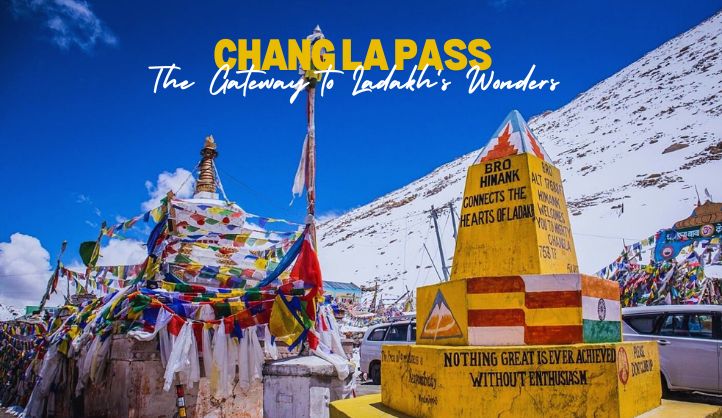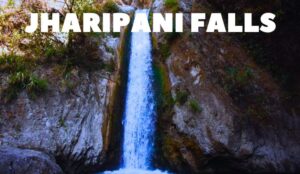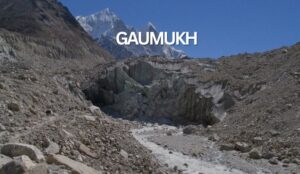Chang La Pass is one of the highest motorable passes in the world, standing at an elevation of approximately 5,360 meters (17,585 feet). Known for its stunning vistas, snow-laden peaks, and treacherous roads, Chang La is a crucial gateway to the picturesque Pangong Tso Lake and a revered destination for adventure enthusiasts. This article explores the beauty, history, strategic importance, and travel tips for Chang La Pass.
Chang La, often referred to as the “Pass of the South,” is located in the Ladakh region of India. It connects Leh to the Changthang Plateau, the high-altitude home of the Changpa nomads. Known for its icy weather and breathtaking landscapes, Chang La attracts adventurers, photographers, and nature lovers from around the globe.
The pass is also of strategic importance due to its proximity to the India-China border. Managed and maintained by the Indian Army, Chang La is not only a testament to engineering but also a symbol of resilience and strength.
Geographical Significance
Chang La Pass is part of the greater Himalayan range and lies along the Leh-Karu-Tangtse-Pangong Tso road.
- Altitude: 5,360 meters (17,585 feet) above sea level.
- Coordinates: 34.0201° N, 78.1479° E.
- Nearby Destinations:
- Pangong Tso Lake (70 km from Chang La).
- Leh Town (76 km from Chang La).
The pass serves as a vital connection for locals, travelers, and defense forces, linking Leh to the remote areas of Ladakh.
History of Chang La Pass
Chang La has historical roots intertwined with the Silk Route, which saw traders and travelers journeying through these high-altitude passes. In recent times, its prominence has grown due to its strategic military importance and its role in connecting Leh with Pangong Lake, one of the most visited locations in Ladakh.
Climate and Weather
Chang La is known for its extreme climatic conditions:
- Winters: Temperatures can plunge below -20°C. Snow covers the pass, making it inaccessible for months.
- Summers: Temperatures range between 10°C and -5°C. While the roads are clear, the icy winds persist year-round.
- Best Time to Visit: May to September, when the roads are open, and the weather is comparatively milder.
Flora and Fauna Around Chang La Pass
Despite the harsh conditions, Chang La is home to unique flora and fauna adapted to high altitudes.
- Flora: Limited vegetation, including hardy shrubs and mosses.
- Fauna:
- Marmots: Often spotted by travelers.
- Yaks: Domesticated by locals for transportation and dairy products.
- Snow Leopards: Rare but present in the higher reaches of the region.
Nearby Places to Explore Around Chang La Pass
Chang La Pass serves as a gateway to numerous breathtaking destinations in Ladakh. Here are some of the most notable places to explore near this iconic high-altitude pass:
1. Pangong Tso Lake
Distance from Chang La: ~70 km
One of Ladakh’s most famous attractions, Pangong Tso is a mesmerizing saltwater lake that extends from India into Tibet. Known for its vivid blue waters that change hues throughout the day, Pangong Tso offers a tranquil retreat for visitors.
Activities:
- Photography of the surreal landscapes.
- Camping along the lake.
- Stargazing under clear night skies.
2. Tangtse Village
Distance from Chang La: ~35 km
Tangtse is a quaint village located en route to Pangong Tso. It serves as a popular pit stop for travelers, offering basic amenities and insights into the rural lifestyle of Ladakh.
Highlights:
- Interaction with locals.
- Simple yet scenic accommodations.
- Small monasteries and grazing yaks.
3. Leh Town
Distance from Chang La: ~76 km
Leh is the heart of Ladakh and a hub for culture, adventure, and history. This bustling town is an excellent base for acclimatization and exploring nearby attractions.
Highlights:
- Leh Palace: A 17th-century palace with panoramic views of the town.
- Shanti Stupa: A white-domed structure offering a peaceful retreat.
- Local Markets: Shop for souvenirs, handicrafts, and Pashmina shawls.
4. Hemis Monastery
Distance from Chang La: ~85 km
The largest and wealthiest monastery in Ladakh, Hemis Monastery is renowned for its annual festival celebrating Padmasambhava, the founder of Tibetan Buddhism.
Highlights:
- Intricate murals and thangkas (Buddhist paintings).
- Peaceful ambiance perfect for meditation.
- Exploring the museum showcasing ancient artifacts.
5. Thiksey Monastery
Distance from Chang La: ~70 km
Resembling the Potala Palace in Lhasa, Thiksey Monastery is a stunning 12-story complex with numerous shrines, stupas, and statues.
Highlights:
- The 49-foot-tall statue of Maitreya Buddha.
- Panoramic views of the Indus Valley.
- Morning prayers for an authentic Buddhist experience.
6. Changthang Wildlife Sanctuary
Distance from Chang La: ~100 km
Stretching across the high-altitude Changthang Plateau, this sanctuary is home to unique wildlife species such as the Tibetan wild ass (Kiang), snow leopards, and Sarus Cranes.
Activities:
- Wildlife spotting and photography.
- Learning about the ecosystem of the high-altitude cold desert.
7. Shey Palace and Monastery
Distance from Chang La: ~68 km
Once the summer capital of Ladakh, Shey Palace is a historic site known for its ancient architecture and the towering Buddha statue inside the monastery.
Highlights:
- Exploring the ruins of the royal palace.
- Witnessing the panoramic views of the surrounding fields.
8. Durbuk Village
Distance from Chang La: ~45 km
A small, picturesque village, Durbuk is located along the route to Pangong Tso. It offers a peaceful environment and stunning views of the surrounding mountains.
Highlights:
- Experiencing rural Ladakhi life.
- Rest stops for tea and snacks.
9. War Memorials in Ladakh
Distance from Chang La: Varies (closest in Leh)
Several war memorials commemorate the bravery of soldiers who served in Ladakh.
- Dras War Memorial: Honoring soldiers from the Kargil War.
- Hall of Fame (near Leh): A museum showcasing the history and culture of Ladakh.
10. Tso Moriri Lake
Distance from Chang La: ~200 km
For those willing to venture further, Tso Moriri offers a serene and lesser-known alternative to Pangong Tso. This freshwater lake is surrounded by snow-capped mountains and is part of a wetland reserve.
Activities:
- Birdwatching, including spotting the black-necked crane.
- Camping in eco-friendly accommodations.
Strategic Importance
Chang La is not just a tourist attraction but also holds significant military value.
- Proximity to Borders: The pass is near the Line of Actual Control (LAC) between India and China.
- Indian Army Presence: The pass is managed by the Indian Army, ensuring its safety and maintenance. Travelers often spot military personnel and vehicles navigating the challenging terrain.
Challenges of Crossing Chang La Pass
1. Acute Mountain Sickness (AMS)
At such a high altitude, reduced oxygen levels can cause AMS, characterized by headaches, dizziness, and nausea.
Tips:
- Acclimatize in Leh for 1-2 days before visiting.
- Stay hydrated and avoid alcohol.
2. Road Conditions
The roads leading to Chang La are narrow, steep, and prone to landslides and snow accumulation.
Tips:
- Drive cautiously and prefer 4×4 vehicles.
- Follow the guidelines provided by the army.
3. Weather Extremes
Sudden changes in weather can lead to temperature drops and visibility issues.
Tips:
- Wear layers of warm clothing.
- Carry essentials like food, water, and medicines.
Cultural Insights
The region around Chang La Pass is home to the Changpa nomads, known for their yak herding and production of Pashmina wool. Their resilience in such a harsh environment is inspiring.
Travel Tips for Chang La Pass
- Permits:
- Obtain an Inner Line Permit (ILP) from Leh to visit Chang La and Pangong Tso.
- Clothing and Gear:
- Layered clothing, gloves, and sturdy boots.
- Sunglasses and sunscreen to combat snow glare.
- Transportation:
- Prefer well-maintained SUVs or hire experienced drivers familiar with the terrain.
- Essentials:
- Oxygen cylinders for emergencies.
- High-energy snacks and water.
How to Reach Chang La Pass
1. By Air
The nearest airport is Kushok Bakula Rimpochee Airport in Leh, 76 km from Chang La.
2. By Road
- From Leh: Drive along the Leh-Karu-Tangtse-Pangong route.
- Regular taxis and bike rentals are available in Leh.
3. By Bike
For adventure seekers, biking to Chang La is a thrilling experience. Ensure the bike is equipped to handle extreme weather and steep roads.
Accommodation Options Near Chang La
- Leh Town: Offers a variety of hotels, homestays, and guesthouses.
- Tangtse Village: Basic accommodations and campsites.
- Luxury Tents: Available near Pangong Tso for a unique glamping experience.
Sustainability and Responsible Tourism
Travelers are encouraged to practice responsible tourism by:
- Avoiding littering and carrying back all waste.
- Respecting the local culture and traditions.
- Minimizing the use of plastic.
Conclusion
Chang La Pass is more than just a high-altitude crossing; it is a journey into the heart of Ladakh’s raw beauty and cultural richness. Whether you’re an adventure enthusiast seeking adrenaline or a nature lover craving solitude, Chang La offers an experience like no other. However, the pass demands respect for its challenging terrain and extreme conditions.
As you ascend this majestic pass, you’ll not only witness awe-inspiring landscapes but also feel a deep connection to the Himalayas’ timeless allure. So, gear up, plan wisely, and let Chang La take you on an unforgettable adventure.
FAQs about Chang La Pass
1. Is Chang La Pass the highest motorable road in the world?
No, Chang La Pass is one of the highest but not the highest. The title often goes to Umling La Pass in Ladakh.
2. Do I need a special permit to visit Chang La Pass?
Yes, an Inner Line Permit (ILP) is required, which can be obtained online or from the DC office in Leh.
3. What is the best time to visit Chang La Pass?
The best time is from May to September when the roads are open and relatively safe.
4. Can I visit Chang La Pass during winter?
No, the pass is usually closed during winter due to heavy snowfall.
5. What are the common health risks at Chang La?
Acute Mountain Sickness (AMS) is common due to the high altitude. Proper acclimatization is essential.
6. Are there any food or rest stops at Chang La?
There is a small café run by the Indian Army where you can get tea and snacks, but options are limited.
Embark on your journey to Chang La Pass and experience the Himalayas in all their glory!





